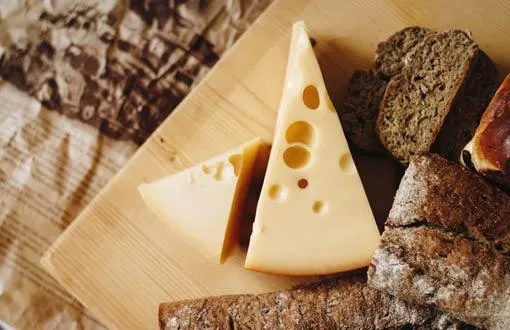Cheese Croquettes
Ingredients
- Roquefort cheese or any other strong-flavoured cheese
- Milk
- Wheat flour
- Butter
- Eggs
- Salt
- Pepper
- Bread crumbs
- Olive oil

Preparation
- Melt the butter in a pan or saucepan. Add the flour and stir with confidence.
- Pour in the milk, season with salt and pepper, and keep stirring.
- Add the crumbled cheese and the egg. Mix everything well, let it cool and set aside.
- Shape the croquettes by hand, then coat them in flour, beaten eggs and bread crumbs.
- Fry them and place them on absorbent paper afterwards.
- Intense aroma, creamy texture and an evocative flavour.
Cheese croquettes: elegant croquettes with plenty of style
The ageing of curdled, unsalted animal milk turns, through a process of curing or maturation, into what we commonly call cheese.
The milk may come from ruminant mammals, mainly cow, sheep, goat, buffalo or camel.
The variety of cheeses is almost endless. The main factors that affect their style, aroma, texture and flavour are:
- The diet of the animal the milk comes from
- Moulds and bacteria involved in the production process
- Time and method of ageing
- The place where the cheese matures
- Aromatic herbs
- Spices
- Smoking
- Whole, fresh or pasteurised milk
- The addition of lemon or vinegar
Origins of cheese
The origin of cheese is still debated. Sheep domestication began between 10,000 and 14,000 years ago. There are Sumerian traces of proto-cheeses over 5,000 years old. Egypt also likely knew how to produce cheeses suitable for human consumption.
In Greece, cheeses were considered exquisite gifts from the gods, and in the Roman Empire they were part of the daily diet.
France and Italy saw early development of the cheese industry internationally, and they remain leaders today.
As for Spain, the quality of its cheeses with Designation of Origin is beyond question. Cabrales blue cheese and Manchego are appreciated worldwide.
Cheese production
Global cheese production exceeds 22 million tonnes. The main producers are the USA (around 30 percent of the total), Germany, France and Italy.
The top cheese-exporting countries are Germany, the Netherlands, Italy, France and the USA.
The countries where residents consume more than 25 kilos of cheese per person, per year are Denmark, Iceland, Finland, France and Cyprus.
Types of cheese
- Protected Designation of Origin cheeses
- Pasteurised or whole milk cheeses
- Fresh cheeses
- Cured cheeses aged at least 18 months to 2 years
- Creamy and spreadable cheeses
- Blue and green cheeses: rich in mould, strong aroma and intense flavour. Aged in caves or rooms with over 90 percent humidity
- Stretched-curd cheeses: elastic texture
- Leaf cheeses: typical of Mexico and Central America, similar to savoury mozzarella
Cheeses are highly nutritious and rich in proteins, calcium and phosphorus. Moderate consumption is recommended under medical guidance.
Cheese. A food that is very easy to enjoy.
Cheese fits beautifully into countless dishes:
- On its own with a piece of bread
- In croquettes
- Fondue and raclette
- Pizza
- Lasagna
- Cannelloni
- Burritos
- Tacos
- Quesadillas
- Hamburgers
- Hot dogs
- Sandwiches
- Desserts: cakes, sweets...
Well-crafted cheese croquettes are considered a true delicacy of high gastronomic refinement.
Esta entrada también está disponible en:
![]() Español
Español
